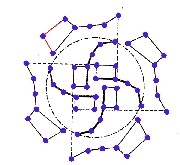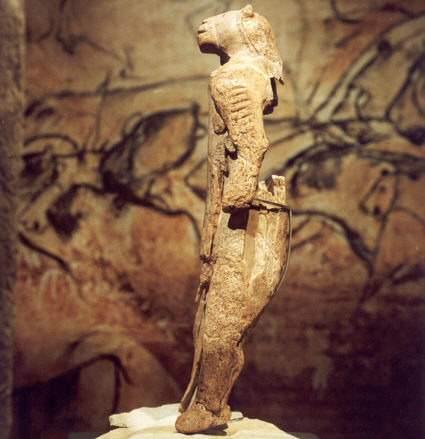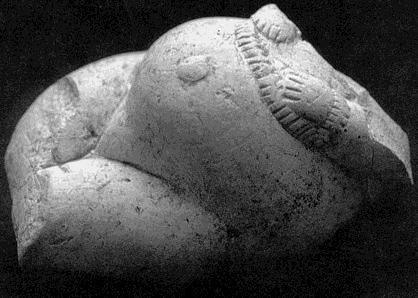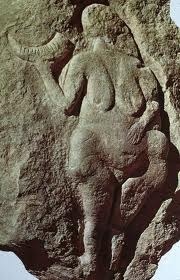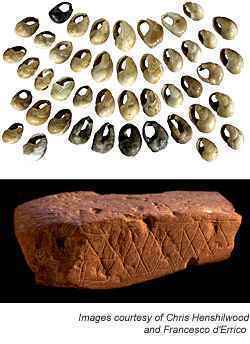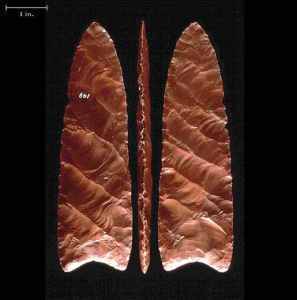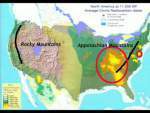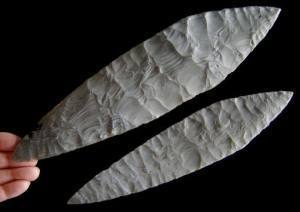Kathleen Flanagan Rollins's Blog, page 7
August 1, 2013
Tasty Summer Reads Blog Hop
Thank you, Jessica Knauss, for inviting me to join this blog hop about fiction and food. I’ve asked Carol Anita Ryan, author of Right Now Is Perfect, <rightnowisperfect.com> to join the hop too.
When I started writing a series of prehistoric adventure novels, I didn’t know I’d end up learning about many subjects, including wild foods. A local foraging guru showed me a fabulous world of wild edible and medicinal plants out there. I’ve found I love the adventure of finding, preparing, and eating wild foods.
We’re surprisingly ignorant about the plants that surround us, but ancient people knew all about the wild foods available each season; they had to. Elders warned young people not to eat the fruits or one plant, to peel those of another, to cook and mash another. Their accumulated knowledge allowed the tribe to survive.
This is the world I write about in Misfits and Heroes: West from Africa and Past the Last Island, the second book in the Misfits and Heroes series, both set 14,000 years ago. The first book follows a group of travelers from the coast of West Africa across the Atlantic. The second follows explorers island-hopping eastward across the South Pacific until they decide to pass the last island and head out into the open sea.
Now, for the questions:
Do you snack as you write? Sadly, yes. Sweet or salty? Both. The current vice is blue corn chips, but chocolate cookies are never very far away.
Outline or seat of the pants? Both. I have a general outline and section guidelines, but once I’m writing a scene, I tend to just go with it, or “pants it,” as one writer put it.
Do you stick to a recipe or wing it? I always begin thinking I’ll stick to the recipe then find I’m missing some ingredient but I have something sort of like it that might work if I just adjust those other ingredients, and so on. Sometimes it works out very nicely, but then I can’t remember exactly what I did to make it work. With wine, I find I have to take careful notes. Otherwise, I just repeat the same mistakes on the next batch.
What’s next? My WIP is the third book in the series, where both groups meet in what is now known as southern Mexico. Beyond that, a fourth is lurking in the wings.
How hot is it? Like Ginger Myrick, I tend to suggest sex rather than describe it. Some sections are romantic, but the book’s accent is on adventure rather than romance, though romance is certainly part of the adventure. I guess it’s a 3. Maybe. I’d love to hear from a reader on that score.
Now, for the recipes:
Wild foods can be very simple to prepare or incredibly complicated. I tend to go with the easy stuff. Here are two very easy possibilities:
Pick fresh dandelion flowers from an area you think is safe from chemicals and pets. Rinse off any visiting bugs, shake the flowers out and let them dry on a towel.
Heat oil in a heavy pan.
Mix up one cup of flour, one egg, and one cup of milk.
Swirl dandelion flowers in the batter and fry them until golden brown, then flip them over until the other side is brown. Then remove and set on paper towel. While they’re still hot, dust them with kosher salt. Enjoy! Even people who have never eaten wild foods will (probably) love them. They have a very mild flavor, not bitter like dandelion leaves, though they’re great too.
Daylily salad
When daylilies (aka ditch lilies) are in season, pick a couple of handfuls of buds and four open flowers from an area away from car exhaust and lawn chemicals. Remove the stamens and pistils from the flowers. Cut the stem ends off the buds rinse them off and let them dry. Include the buds with the tossed salad fixings you like best. The buds have a very mild flavor, a little like asparagus, and go with almost anything. Fill the cup of the flowers with herbed cheese and put them on top of the salad as an edible garnish. Their very mild flavor goes well with something stronger, like garlic or pungent herbs.
Then I hope you go crazy with more wild foods. So delicious – and free!
Be sure to check out the other blogs in the hop!
Carol Anita Ryan
Christy English
Donna Russo Morin
Nancy Goodman
Lauren Gilbert
Lucinda Brant
Prue Batten
Anna Belfrage
Ginger Myrick
Jo Ann Butler
Kim Rendfeld
Cora Lee
Jessica Knauss
Susan Spann Richard Abbott Patricia Bracewell


June 1, 2013
Chickens, Sweet Potatoes, and Polynesians in Brazil
 When Thor Heyerdahl, the famous Norwegian explorer and botanist, went to the Polynesian island of Fatu Hiva for his honeymoon in 1936, he was fascinated by the indigenous people’s legends that told of their ancestors arriving across the sea from the east. The only land east of there was South America. He also noted that island plants such as papaya, breadfruit, pineapple, sweet potato, pumpkin, and wild cotton were native to South America. Early European explorers noted these plants already growing in the Polynesian islands when they arrived, so Heyerdahl saw their presence as evidence that ancient seafaring people had come from South America to Polynesia, probably floating with the current.
When Thor Heyerdahl, the famous Norwegian explorer and botanist, went to the Polynesian island of Fatu Hiva for his honeymoon in 1936, he was fascinated by the indigenous people’s legends that told of their ancestors arriving across the sea from the east. The only land east of there was South America. He also noted that island plants such as papaya, breadfruit, pineapple, sweet potato, pumpkin, and wild cotton were native to South America. Early European explorers noted these plants already growing in the Polynesian islands when they arrived, so Heyerdahl saw their presence as evidence that ancient seafaring people had come from South America to Polynesia, probably floating with the current.
When scholars refused to take his theory seriously, Heyerdahl had a 45’ long boat made of balsa logs and other native materials, which he named Kon-Tiki, built in Peru. Boating “experts” all agreed that it would sink within a week. Yet, 100 days later, on August 7, 1947, Kon-Tiki landed on Raroia Atoll in the South Pacific. It had covered 4300 miles of open water.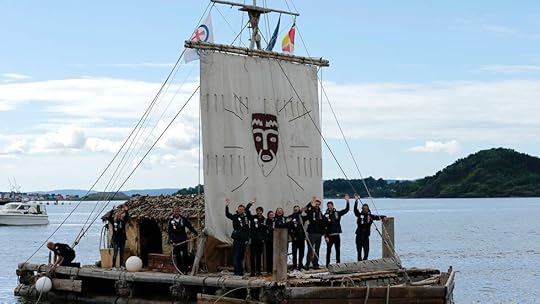
Based on this voyage and excavations he made on Rapa Nui (Easter Island), he concluded that people from an ancient advanced civilization from South America had traveled west across the ocean to the South Pacific islands.
Later, fascinated by the common design of reed boats from Egypt and South America, he launched Ra I and later Ra II to show that travel between Africa and South America would have been very possible using reed boats. Ra I ran into structural problems and had to be abandoned, but in 1970, Ra II made the trip from Morocco to Barbados, off the coast of South America, in 57 days. It had covered 3,270 nautical miles.
Despite these feats, several very popular books and a movie version of the Kon-Tiki adventure, most of his theories were never taken seriously.
Ancient Mariners
However, some of his ideas are now enjoying a long-delayed nod of appreciation. He noted the “bird-man” figure so common in Polynesian petroglyphs was also found on Easter Island, indicating at least some form of communication between them. Actually, DNA studies have now shown Easter Island (Rapa Nui) native inhabitants to have Polynesian origins.
Perhaps Heyerdahl’s vision was too one-sided. He saw the people drifting from South America to Polynesia, but they may well have sailed from Polynesia to South America and back again.
Chickens, Coconuts, and Gourds
Chickens likely originated in Southeast Asia, China, or India and spread across the South Pacific with seafaring people. Interestingly, chicken bones discovered in an archaeological site in southern Chile match 2000 year-old chicken bones found in American Samoa in the South Pacific. According to Brendan Borrell in the journal Nature, “The discovery of chicken bones with Polynesian DNA at an archaeological site in Chile has added hard, physical evidence to the controversial theory that ancient seafarers from the South Pacific visited the New World long before Columbus.”
Coconuts
Spanish conquistadors reported coconut palms growing in South America when they arrived. Coconuts originally came from the Philippines.
Bottle gourds
 The calabash, or bottle gourd, is such a handy water carrier that it spread with human migrations from Africa to Asia, Europe, and the Americas. The earliest bottle gourd found in an archaeological site in South America is in Ecuador, dated to 9300 years ago.
The calabash, or bottle gourd, is such a handy water carrier that it spread with human migrations from Africa to Asia, Europe, and the Americas. The earliest bottle gourd found in an archaeological site in South America is in Ecuador, dated to 9300 years ago.
All of these seem to point to ancient navigators crossing both the Atlantic and Pacific Oceans to the Americas. A possible route across the Pacific is marked on the map, indicating how people could have traveled, island-hopping across the Pacific to the west coast of South America. The red line marks another possible water route, from Asia to northern North America.
Interesting New Evidence
According to a paper published in the journal Nature, April 2013, Polynesian DNA has been found in ancient Native American bones.
Molecular geneticist Sergio Pena analyzed DNA from teeth in skulls of Botocudo, indigenous people who lived in southeastern Brazil until they were eradicated by the Portuguese in the 1800s in an attempt to quell dissent. (The drawing included here is a portrait of a Botocudo man made in 1875.) Fourteen Botocudo skulls were kept in a museum in Rio de Janeiro. To the scientists’ surprise, in two of the skulls, they found DNA indicating Polynesian ancestry. A second lab confirmed the findings. Pena remarked, “The most exciting potential explanation of the DNA findings is that ancestors of the Botocudo once interbred with those of Polynesians before the peopling of the Americas 15,000 – 20,000 years ago. Prior studies of skull shapes hinted that two distinct groups entered the Americas – one more Asian type seen now in the vast majority of extant Native Americas, and an earlier type seen in skeletons in Brazil and elsewhere that resembled some African groups, Australians, Melanesians, and Polynesians such as Easter Islanders.”
Loud debate erupted as soon as the news was released. Yet one of the most interesting parts of the discovery went unnoticed. DNA studies, on which we currently base our models of human colonization of the Americas, were – up until this study – based almost exclusively on living people. Thus any race that went extinct, such as the Botocudo and many others, would never be represented and their part of the story never told. Finally we get to see one of many missing chapters with the Brazilian study.
Yet even now, many are unwilling to admit that ancient people had the seamanship and navigational skills to cross vast areas of open sea. Perhaps that will change someday.
This writer is particularly pleased with the study finding Polynesian DNA in now-extinct Brazilian Indians since Past the Last Island, the second book of the Misfits and Heroes series, follows a group of South Pacific explorers 14,000 years ago who purposely choose to go past the edge of the world. And (spoiler alert) they wind up in the New World.
It’s too bad Thor Heyerdahl, who died in 2002, didn’t live to see at least some of his theories become more widely accepted.
Sources and interesting reading:
“Adventurer Thor Heyerdahl Dies,” National Geographic News, 19 April 2002
Borrell, Brendan. “DNA reveals how the chicken crossed the sea: Ancient Polynesians may have brought birds to the Americas,” Nature 447, 620-621 (7 June 2007), published online 6 June 2007
Choi, Charles Q. “Polynesian DNA found in ancient Native American bones,” PNAS First Look Blog, 1 April 2013 http://firstlook.pnas.org/polynesian-dna
Hirst, K. Kris. “Trans-Pacific Connections: Was there Pre-Columbian Contact between Polynesia and America?” About.com Archaeology http://archaeology.about.com/od.transportation/a/trans-pacific.htm
“Kon-Tiki,” The Kon-Tiki Museum: Thor Heyerdahl’s Research Foundation http://www.kon-tiki.no/Images/NOENTY.pdf
Perkins, Sid. “DNA study links indigenous Brazilians to Polynesians: Sequences shared by far-away population stir up a Paleoamerican mystery” Nature News, 1 April 2013. http://www.nature.com/news/dna-study-links-indigenous-brazilians-to-Polynesians
“Thor Heyerdahl” Wikipedia


May 2, 2013
The Serpent and The Celestial Bird Become The Dragon
The dragon, the winged serpent, is the most widespread mythological beast in the world. Dragons appear in Old World myths from Europe, India, the Middle East, Asia, Southeast Asia, and the South Pacific, as well in the New World in the form of the feathered serpent from Indian tribes in North America and Olmec, Maya, and Aztec cultures from Mesoamerica. Dragons have been represented on the gates of Babylon, Chinese vases, pictographs above the Mississippi River, and bones carved by Inuit artists in the Arctic.
The oldest versions were snakes, but after the Middle Ages, dragons were often pictured with legs, either stubby reptilian legs or sturdy avian or feline legs, usually two or four. Most have one head, though some have two or even three. Most are associated with bodies of water and rainfall.
Where did this image of the flying snake come from? In The First Fossil Hunters, Adrienne Mayor suggests that fossils of dinosaurs such as Archaeopteryx or skeletons of whales spawned the legend. Others suggest crocodiles, giant goannas (in Australia), or the Komodo lizard (in Japan). Anthropologist David E. Jones suggests that dragons were the sum of ancient people’s fears: snakes, birds of prey, and big cats.
All of those arguments may have some merit, but none explain the universality of the image. I think the people saw the winged serpent in the stars, specifically, in the combination of Ursa Major and Draco.
The Big Dipper
One of the most familiar asterisms in the night sky is the Big Dipper, part of the constellation Ursa Major. It’s easy to find because the stars are so bright.

The constellation Ursa Major
For many, the seven bright stars look like the outline of a giant ladle or dipper, but other people see the seven bright stars of the Big Dipper as a plough, a wagon drawn by oxen or a carriage drawn by horses, a camel, a skunk, a fisher cat, a salmon net, a butcher’s cleaver, a coffin with three mourners following behind, a saucepan, or a basket. In some places, the seven stars represented people, such as the Seven Sages or Seven Brothers.
Many northern peoples saw the Big Dipper as a giant bear, a mother bear being followed by three cubs, or a bear being chased by three hunters. The bear image itself is subject to debate. Some see the Big Dipper as fitting in the bear’s back while others make the handle of the Dipper into a very long tail, which is strange since bears have such stumpy little tails, though the problem is often explained away with a story.
Let’s look at it a different way: take the Big Dipper as the body and wing of a great bird instead. Add the other wing from the bright stars already included as part of the Great Bear constellation that you can see in the illustration. Then you’ll have the body and both wings of the bird. The tail comes out at the bottom of the bird’s body, and the head comes from stars not included in the constellation grouping.
Ursa Major as part of the Great Bear
Always Circling the Center
The Big Dipper is a circumpolar asterism, meaning it rotates around the unmoving center of the night sky, which we now call Polaris, or the Pole Star, in the course of the night. It also marks the seasons, in that it rises in different positions at twilight during winter, spring, summer, and fall. It would be easy for ancient people to tell what time it was at night by the position of the Dipper, and to know the seasons from the Dipper’s position at dusk.
When you consider all the seasonal positions of the Big Dipper and Little Dipper, you get a whirling pattern like the one in the diagram.
Draco the Dragon
The other half of the dragon is Draco, the constellation that snakes around between the Big Dipper and the Little Dipper. While Polaris is currently the closest star to true North in the night sky, 5,000 years ago it was Thuban, one of the stars in Draco. Farther back yet, it was the dark space between the stars referred to as the Cave of Creation.
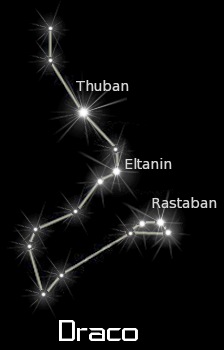
Constellation Draco, with Thuban marked

Constellation Draco with major stars marked
In North America, many images of the whirling logs or swastika design appear to incorporate the movements of the Dipper. Some include both the winged figure and the serpent.
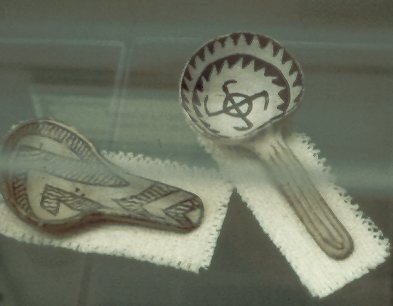
American Indian artifact at least 800 years old, showing the movement of the Big Dipper
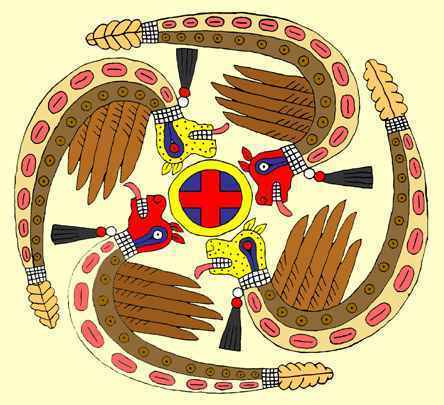
Whirling winged serpents
This piece shows the whirling pattern incorporating both horned rattlesnakes and winged figures with feline heads, combining forces of the earth and sky. As far back as 1901, Zelia Nuttall recognized the role of the Big Dipper in the whirling logs or swastika design so common in American Indian artifacts. The review of her article “The Fundamental Principles of New and Old World Civilizations” from the Archaeological and Ethnological Papers of the Peabody Museum of Harvard University, notes that Ms. Nuttall suggested that the swastika symbol was “believed to have originated in the revolution of the stars of Ursa Major about Polaris….” In fact, she suggests that the swastika itself is merely a representation of the Big Dipper at all four seasons.
If indeed, the Big Dipper is part of a great Celestial Bird, the Bird and the Serpent together wheel around the Portal of Heaven, the Cave of Creation. Their power as opposites is combined into the force that moves the heavens. They become the Winged Serpent, the Feathered Serpent, the place where earth and sky, male and female join to generate the force that moves the heavens.

My drawing of the Big Dipper as a bird and Draco as the serpent
This is the image I use for the Misfits and Heroes series of ancient adventure novels. It’s my own drawing based on the current positions of the stars in Ursa Major and Draco, designed to be a symbol of the dynamic opposites so important to the ancients, especially in Mesoamerica. It’s a dragon, or at least its parts, momentarily and somewhat artificially suspended in time and motion in its endless circle around the Portal of Creation.


March 9, 2013
The Lion-headed Figurine
The most well-known – and controversial – piece of Paleolithic European art is the carved mammoth-ivory sculpture known as Lowenmensch, German for “lion-man” or lion-human,” although perhaps Lion Lady, or Lion Man/Lady would be more accurate. Like everything else about it, its gender is the subject of debate. While little is known about the people who carved it or its significance to them, the figure, even in fragmentary form, is arresting. Now, new clues from the cave where it was found and others in the area put the famous figure in better context.
The figure is about 30 cm (11 ½ inches) tall, with a clearly formed lion head and a left arm, which looks more like a lion’s leg, bearing striations. A double line runs down the side of the head, from the front of the ear down to the neck. The posture is human but the body and left arm (front leg) seem very feline. The hand seems more like a paw though the left foot seems like a small human foot with a pointed toe. A clearly marked navel lies above the ambiguous genital triangle.
It’s thought to be somewhere between 35,000 and 40,000 years old.
History
Given its complicated story, it’s surprising we know about The Lion-headed Human at all.
In 1861, a priest collecting bear bones in Stadel Cave, one of several caves in a limestone cliff in Hohlenstein Mountain in southwestern Germany, also found thousands of flint chips, but being interested only in the bear bones, he dug around with his shovel, found dozens of bear skulls, and threw everything else away, destroying levels of archaeological sediments and fragile pieces of ivory in the process.
In 1939, Robert Wetzel came to the cave to check on the rumored flint tools. Unfortunately, he had little time. World War II was beginning, and soon he was called up for service in the German military. On the day he was to leave, his team discovered fragments of ivory below pieces of worked flint. Because he had to hurry, he scooped up the fragments he’d excavated into cardboard boxes, then hid the boxes until after the war, when he donated them to the Ulmer Museum, where they were placed in storage and forgotten.
Between 1954 and his death in1961, Wetzel continued his excavations in Stadel Cave, finding bones that indicated the cave had been inhabited by both Neanderthals (The thigh bone he found is one of few Neanderthal bones found in southern Germany.) and Homo sapiens. The bones included those of a man, woman, and child with severed heads, buried together. In addition, he found bone fragments from at least 54 individuals. As with the fragments of the Lion-headed figurine, he donated these finds to the museum at Ulm. (The photo at the right is from the Ulmer Museum exhibition.)
In 1969, in the course of an inventory at the museum, Dr. Joachim Hahn came across the mammoth-ivory fragments and noticed a similarity among some of the pieces. Eventually, he pieced together nearly two hundred fragments to make a human/animal figure missing a head. Dubbing it Lion Man, he saw this figure as evidence of Stone Age people’s belief in mystical/spiritual concepts.
Twenty years later, Elizabeth Schmid added more pieces from the museum’s collection and completed a new examination of the cave, finding many other fragments, completing the head and arm. However, Schmid disagreed with Dr. Hahn and declared the figure was female, not male, noting what she identified as a clearly marked pubic triangle.
The mystery continues to play out clues. In 2011, the Stadel cave was excavated again, in the same place as the original find. In the course of the excavation, archaeologists sifted through the rubble piles left behind by the first group. Claus-Joachim Kind, who oversaw the screening, announced: “We have about a thousand items which may be of the statue.” In order to fit them exactly, the old glue was removed and the new pieces inserted. New finds include part of the neck and back, as well as most of the missing right arm. Researchers also found more striated marks on the surface like those on the arm.
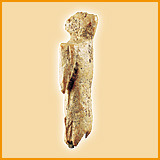
Artifact found in Hohle Fels Cave
The digging spot was located beside a fire pit in a niche 27 meters from the entrance from the cave. Nearby were decorated deer teeth and artic fox incisors as well as ivory beads.
More Finds in the Neighborhood
A few kilometers from Stadel Cave is Hohle Fels cave, which is famous for the Venus of Hohle Fels figurine found there and dated to 35,000 years ago. There, in 2001, a smaller version of the Lion-Headed Human was found. Like its taller cousin, this one-inch tall, partial figure exhibits both human and animal characteristics, with a clearly carved leonine ear and truncated arm/leg, just like the Lion-Headed figure. Also, it has a clear slash mark down its left arm. It cannot be determined whether the figure is meant to be male or female because it doesn’t have any genital area. This figure is thought to be 33,000 years old.
After considering the curious similarities between the different Venus figurines (See earlier post on Venus Figurines) found in fire pits, broken into pieces, it’s very interesting to find the same circumstances for this figure. The cut marks found on the figure, as well as its “Little Brother,” are also reminiscent of the marks on the Venus figurines.
The Shaman’s Journey
Many experts say the Lion-Hum an combination suggests a shamanistic trance in which a person may enter another world, often through the portal offered by a cave. In this sense, the shaman may take on the characteristics of an animal as part of the transformation. In the San rock art picture from South Africa (left), the figure on the left is the shaman who has become part human, part large animal, taking on the power of the animal (n’om) in order to fight off illness or imbalance in the tribe.
an combination suggests a shamanistic trance in which a person may enter another world, often through the portal offered by a cave. In this sense, the shaman may take on the characteristics of an animal as part of the transformation. In the San rock art picture from South Africa (left), the figure on the left is the shaman who has become part human, part large animal, taking on the power of the animal (n’om) in order to fight off illness or imbalance in the tribe.
This shamanic alteration is common in many parts of the world, where holy men and women wear headdresses or whole skins of animals as part of their ritual. If that is the case with the Lion Human, it indicates a very early sense of this dual world and the ability of some humans to access to it.
The apparently hermaphroditic condition of the figure would be consistent with the shamanic theory. Some cave paintings from the same era include both male and female characteristics, such as the famous “Sorcerer” figure in Chauvet Cave, which combines the head of a bull with a female pubic triangle. According to Dr. Jean Clottes, it is the combination of opposites which creates power.
In any case, the particular combination of lion and human, for which this figure seems to be the first representative, plays a very important part in our history, from the lion-headed goddesses like Tanit, Astarte, and Sekmet, to the lion-headed incarnation of Vishnu, to the lion (singa) city (pora) of Singapore, and King Richard the Lion-Hearted.
As post script, the Guennol Lioness, a 5000-year-old limestone statue found in Iraq, features a well-muscled lioness with a human body and hands (pictured, left). It was sold through Sotheby’s Auction House to a private collector for $57 million in 2007. The notes on the 3 ½” figure indicated that many ancient Near East deities were represented by anthropomorphic figures, which evoked the Mesopotamians’ belief that they could attain power over the physical world by combining the superior physical attributes of various species. Interesting, eh?
Sources and Interesting Reading:
“Archaeology: Lionheaded Figurine” http://www.showcaves.com/english/explain/Archaeology/Loewenfrau.html
“Caves of Germany” Hohlenstein, http://www.showcaves.com/english/de/caves/Hohlenstein.html
Davidson, Laura Leigh. “First Flute Found: Scientists discover the world’s oldest musical instrument,” www.scholastic.com
“Guennol Lioness” Wikipedia, http://en.wikipedia.org/wiki/Guennol_Lioness
“Lion – Cultural Depictions” Wikipedia, http://en.wikipedia.org/wiki/Lion
Lion-headed figurine” – updated, TYWKIWDBI, March 8, 2013, http://tywkiwdbi.blogspot.com/s013/lion-headed-figurine
The Lion Lady – Die Lowenfrau, Don’s Maps, www.donsmaps.com/lionlady.html.
“Lion man of the Hohlenstein Stadel,” Wikipedia, January 25, 2013
http://en.wikipedia.org/wiki/Lion_man_of_the_Hohlenstein_Stadel,
Partian, Gary. “The Lion Man of Hohlenstein Stadel: Mystery from the Stone Age” October 21, 2009 http://voices.yahoo.com/the-lion-man=hohlenstein-stadel-mystery
“The Paleolithic Age” The Prehistory of Homo Sapiens, Part IV, The Essay Web, http://essayweb.net/history/ancient/prehistory
Schulz, Mattias. “Puzzle in the Rubble,” Der Spiegel, 2011, http://www.spiegel.de/speigel/print/d-82612721.html
“Swabian Jura,” Wikipedia, http://en.wikipedia.org/wiki/Swabian_Alb
Ulmer Museum Archaeological Collection, The Lion Man Exhibition
http://www.showcaves.com/english/de/misc/UlmerMuseum.html
Marsha Walton, CNN.com “Cave Art from 30,000 Years Ago?” December 18, 2003


February 17, 2013
Historical Fiction Blog Hop, Part II
O ur assignment was to include exactly ten sentences from a story. My contribution this week is from Past the Last Island, the second book in the Misfits and Heroes series on ancient explorers. This section describes the transformation of Owl Man, the shaman, who has chosen to remain behind on the island while the others continue their journey.
ur assignment was to include exactly ten sentences from a story. My contribution this week is from Past the Last Island, the second book in the Misfits and Heroes series on ancient explorers. This section describes the transformation of Owl Man, the shaman, who has chosen to remain behind on the island while the others continue their journey.
In the days and nights that followed, he never moved. The yellow-eyed boat blew over in a storm. Rains fell on him, and sunlight and moonlight and spray from the waves. His hair grew so long it reached down his back to the ground; his toenails twisted into the sand. A swift perched on his shoulder.
Inside, he discovered a great space filled with sky that he rose up into, pushing through it with his uplifted arms, stretching out his fingers until he reached the very heart of the sky. Just before he had it under his fingers, the swift stopped him, saying, “It is not given to you to know the heart of the sky.”
So he returned, sending out roots into the earth, solidifying into a guardian tree near the shore, its trunk greater around than the reach of six men, its branches reaching higher into the sky than those of any other tree. Red macaws claimed the tree and tiny wax bees, grey monkeys, a python, a wide-eyed tarsier. Most of all it belonged to the swift, who, as the shaman’s other, gave him the gift of flight, even as he took root deeper into the ground.
Don’t forget to check out the other blogs on the hop!
Jessica Knauss – The Seven Noble Knights of Lara


February 4, 2013
Venus Figurines
Interestingly, in Europe, the period between 45,000 and 25,000 years ago, which saw so many important innovations, including eyed needles, the atlatl (spear thrower), pottery, fiber craft including baskets, rope, and clothing, as well as the great cave paintings of Lascaux, Chauvet, Altamira, and El Castillo, coincided with the period of co-existence of Homo sapiens and Homo Neanderthalensis, whom we now know interbred. Perhaps the influx of new blood proved to be very beneficial to Homo sapiens. Perhaps it provided the right conditions for the flowering of symbolic art.
Venus Figurines
The earliest examples of what are now called Venus Figurines were discovered in Israel and North Africa, though they are often excluded from the European Venus group, perhaps because the European figures were all dated between 35,000 and 20,000 years old, whereas the examples from Israel and Morocco were far older. The Venus of Berekhat Ram, discovered in the Golan Heights, is little more than a pebble carved to resemble a woman’s head, shoulders, and breasts. While it was originally dismissed as the result of natural erosion, microscopic study revealed the marks were man-made. It was dated by the two strata it was found between – somewhere between 230,000 and 500,000 years old.
Only eighteen years later, the Venus of Tan-Tan was discovered in Morocco by Lutz Fiedler, a German archaeologist. Like the Venus of Berekhat Ram, it was found between two layers. The lower layer was dated 500,000 years ago, the upper layer to 200,000 years ago. It was coated with red ochre. (See earlier post, “The Color of Life and Death” on red ochre.)
While the Venus of Berekhat Ram clearly shows enormous breasts, the Venus of Tan-Tan seems only generally humanoid in form, marking off a head, torso, and legs. Most of the later Venus figures are clearly female, with exaggerated female traits, but some are ambiguous, with no gender evident, at least one is male, and some seem to be young, immature females. In all cases, the term “Venus” is somewhat misleading. None of them look like the classic Greek beauty!
Not exactly art as we usually think of it
While the Venus figurines from Eurasia are often called the first pieces of mobile art, I suspect they didn’t function the way modern art does. Most were found rubbed with red ochre, broken in pieces and buried in fire pits. That’s hardly the way most people today treat their art treasures. More likely the figures were part of a wide-spread cult that involved ritual destruction and burial of the figurines, perhaps as a way to ensure abundance.
Most of the sixty or so Eurasian Venus figurines discovered so far were found in a wide band running from the Atlantic coast near northern Spain to the Mediterranean Sea near the border of southern France and Italy, all the way to the north and east of the Black Sea, in present-day Ukraine and Russia. They have been found in France, Germany, Austria, Italy, Czech Republic, Slovenia, Russia, and the Ukraine, with dates ranging from 35,000 BC to 20,000 BC. That’s quite a large area and a spread of 15,000 years. It’s also the same area that the Neanderthals and Denisovans occupied. The map at right shows the main Neanderthal sites discovered to date.
The European Venus figures are embarrassingly exaggerated, grotesque to modern eyes. They present only the middle of the female body, emphasizing large, pendulous breasts, swollen belly, fat thighs and buttocks. The rest of the body seems irrelevant. In many the face is featureless (or missing) and the feet – and sometimes the arms – omitted completely.
Few women 25,000 years ago would have looked like these figures. They’re not portraits. The importance of the figures is their embodiment of swelling birth. Perhaps the figure is meant to be a spirit related to fertility or birth. Perhaps her fatness, which we see as grotesque, was her beauty. She might have been a symbol of amazing abundance. Some years ago, a college president who was originally from the Philippines greeted an instructor he passed in the hall by saying, “You look nice and fat today.” The instructor was insulted, but it was meant as a compliment. If you have plenty, you have abundance, a form of wealth. In a land where too much to eat was never a problem, fatness would have been an admirable quality, a form of status, a clear indication you’d done well.
Very likely, the figurine represented some form of the Mother figure that we still reference when we speak of Mother Earth or Mother Nature. The figure in the photo is the Venus of Dolni Vestonice, found in the Czech Republic.
The figures
Some of the most famous figures include the following:
Venus of Schelklingen (Hohle Fels Cave), (35,000 – 40,000 years old) Germany, carved mammoth ivory. This exaggerated female form lacks head and feet. Her arms and belly are marked with incised lines. Nicholas Conrad, whose team found the figurine in Hohle Fels cave, said, “Head and legs don’t matter. This is about sex, reproduction.” Unlike other experts, he dismisses the idea of the Venus figure and the mammoth, lion, and diving bird figurines also found in the cave as talismans ensuring hunting magic. He sees the figures as representations of complex ideas with tremendous emotional significance.
Venus of Kostensky, Russia
(30,000 years old), carved from animal bone, found broken in pieces and interred in a ritual fire pit. Particularly interesting for what appears to be rope tying her wrists together, making her look like a sacrificial victim.
Venus of Laussel, France, limestone carving on cave wall near Lascaux (23,000 years old). This figure holds what some experts have identified as a bison horn incised with 13 lines. Other experts claim it is a crescent moon and the 13 lines refer to the 13 moons in an annual cycle. Yet other interpretations include a drinking horn or a musical instrument. Traces of red ochre coating remain on the figure. Since the discovery of the wall carving in 1911, the cave has yielded many other finds, including female figurines similar to the carving, others representing young, immature females, one male figure, and many half-finished pieces which apparently broke during the carving process. The sheer number of items brings up the possibility that they were being crafted as trade items.
Venus of Dolni Vestonice, Czech Republic, fired clay figurine (29,000 years old), found broken in two in fire pit ash. In the same area, archaeologists discovered 700 animal figurines, including mammoth, horse, fox, rhino, owl, bear, and lion, as well as 2000 balls of burned clay.
Venus of Willendorf, Austria, (25,000 years old), covered with red ochre, marked with crisscross lines indicating a woven cap pulled down to cover the face. While some have claimed the figure represents a Mother Goddess or Earth Mother figure, she seems more victim than goddess. A possible combination of the two functions would be something like the Aztec Creator Mother Coatlicue, who had to be destroyed in order for the world to be created. (It’s interesting that this figurine and several others show clear representations of rope and textiles.)
Venus of Brassempouy, France (probably about 25,000 years old) carved from mammoth ivory, head and neck only. This figure is famous for its realistic portrayal of complicated hair style, or a combination of a hair net and braids. It’s also unusual in that it includes only a head and neck and that the features, except for the mouth, are clearly marked. After its discovery in the 1880s, it sparked a fierce debate about the subject’s race; many thought it looked Chinese. Her picture appears at the top of this post.
Venus of Moravany, Slovakia, (24,000 years old) carved mammoth bone, found in an area known to be a Neanderthal settlement in the Middle Paleolithic period
Venus of Savignano, Italy (25,000 years old) carved serpentine stone, marked with red ochre, found in a clay deposit by a river.
Venus of Malta, Russia (25,000 years old), carved mammoth ivory, found near Lake Baikal. Similarities to the European Venus figurines suggest a wide-spread network of the cult that used these figurines.
Venus of Garagino, Ukraine (22,000 years old), carved volcanic rock, found in a cave with petroglyphs, stone tools, and animal bones. This is probably the most exaggerated, abstract form of the Venus figure.
Some thoughts:
Debate over these figures is loud and on-going. Most archaeologists agree that they represented some abstract form of fertility or abundance. I find it interesting that so many were apparently ritually broken and burned, representing a sacrifice, perhaps one meant to ensure abundance. Whatever its beliefs, the cult’s influence was very widespread and lasted over 15,000 years.
Many of the Venus figurines were coated with red ochre, mineral clay sometimes used to renew the power of a talisman. It’s connected with vitality, worn on the face in many societies. It’s what modern western women dust on their cheeks in make-up “blusher.” The Venus of Tan-Tan, discovered in Morocco, dated between 200,000 and 500,000 years ago, also has traces of red-ochre coating. Perhaps the division of the earlier Venus figurines from those found in Eurasia is not warranted.
The time when the Venus figurines were spreading from the Atlantic to the Mediterranean to the Black Sea was also the time when Neanderthals/Denisovans and Homo sapiens inhabited those very areas. Perhaps the combination of the two produced the first examples of widespread, symbolic creations in Europe.
Sources and interesting reading:
Curry, Andrew, “The Cave Art Debate,” Smithsonianmag.com, March 2012
da Silva CM. 2010, “Neolithic Cosmology” Journal of Cosmology 9:2207-2010.
Duhard J-P. 1991. “The shape of Pleistocene Women,” Antiquity 65(248):552-561.
“A Female Figurine from Basal Aurignaic,” Nature (459) 248-252, 14 May 2009
“Neanderthal,” Wikipedia
“Oldest Art,” Encyclopedia of Art, http://www.visual-arts-cork.com/prehistoric/oldest-art
Tattersall I, Schwartz, JH (June 1999) “Hominids and Hybrids: The place of Neaderthals in human evolution,” Proceedings of the National Academy of Sciences 96 (13) 7117 – 9
Sofer, O, Adovasio, JM. And Hyland, D.C. “The Venus Figurines,” Current Anthropology (41) August-October, 2000
“Venus Figurines,” www.visual-art.cork.com
“Venus of Laussel,” archaeology.about.com/od/upperpaleoli...
White, Randall, “The Women of Brassenpouy: A Century of Research and Interpretation,” Journal of Archaeological Method (13) 4.
Witcombe, Christopher, “The Venus of Willendorf – Mother Goddess,” arthistoryresources.net
Webley, Kayla “Top 10 Earth Goddesses,” Time, 22 April, 2011


February 3, 2013
Historical Blog Hop
Misfits and Heroes is happy to be part of the Historical Fiction Blog Hop organized by Jessica Knauss. Today’s assignment was to provide exactly ten sentences from a piece of historical fiction we had written or were working on.
Here’s my contribution, taken from the end of the first chapter of Past the Last Island, set in the South Pacific Islands, 14,000 years ago. Naia, the chief’s servant, has promised to “take care of” the misshapen baby born to the chief’s wife.
Out where the light of the old sun still warmed the flat rocks, she set him down carefully and sat back on her heels. The reddened sky seemed very close above her, arching just over her head. She knew she shouldn’t stay. This place was dangerous; people sometimes felt the sky so close here that they slipped away into it, never to return except as shapes in the clouds.
“Don’t be an old fool,” she said as she pushed herself up. “You’ve been sitting here too long. It’s time to go home.”
Bending down, she tucked the long leaves around the infant, reached one hand under the misshapen head and the other under his back, and settled him back into the fold of her sling. Above her the flaming colors of the sky dome hid the world of the spirits but she knew they could see through holes in the clouds.
“I said I’d take care of him,” she said, looking up, “so I will.”
Don’t forget to visit the other blogs in the hop:
jessicaknauss.blogspot.com
richardabbott.authorsxpress.com
elizabethcaufieldfelt.wordpress.com
kimrendfeld.wordpress.com
stephaniereneedossantos.com
jennajackson.wordpress.com


January 14, 2013
Simplying History
This post appears as a guest post on Sheila Deeth’s blog.
When I was growing up, dioramas were popular exhibits in museums. Maybe you remember them. They ranged from miniature battle scenes with scores of carefully painted tin soldiers to life-size spreads featuring dead, stuffed animals of specific areas, like the Northwoods or the African Plains. They were at once appealing and simplified, or perhaps appealing because they were simplified. Yet ultimately, their simplification robbed them of truth.
Diorama with lions and termite mound, Denver Museum
Battlefield
 The battle scene was probably carefully researched, the background carefully painted, the uniforms and insignia of the combatants, their flags, even the terrain recreated as closely as possible. But in the end, everyone looking at it, even children, knew they were toys. No one gasped at the horror and the bloodshed of the battle, the confusion of a terror-filled valley, the horses stuck in the mud or impaled by a lance, the screams of the wounded. The display was safe and distant, a tableau of toy soldiers on a toy battlefield.
The battle scene was probably carefully researched, the background carefully painted, the uniforms and insignia of the combatants, their flags, even the terrain recreated as closely as possible. But in the end, everyone looking at it, even children, knew they were toys. No one gasped at the horror and the bloodshed of the battle, the confusion of a terror-filled valley, the horses stuck in the mud or impaled by a lance, the screams of the wounded. The display was safe and distant, a tableau of toy soldiers on a toy battlefield.
Diorama of the Battle of Bosworth Field
 In the dinosaur exhibits, the museum had to encase the displays in Plexiglas to prevent viewers from rearranging the plastic animals. They simply begged to be played with, moved, made to come alive with roars and fights. Even children knew that dinosaurs didn’t stand still.
In the dinosaur exhibits, the museum had to encase the displays in Plexiglas to prevent viewers from rearranging the plastic animals. They simply begged to be played with, moved, made to come alive with roars and fights. Even children knew that dinosaurs didn’t stand still.
In the big dioramas, the museums put together preserved specimens from particular ecosystems. In some cases, they were exotic beasts from far-away lands: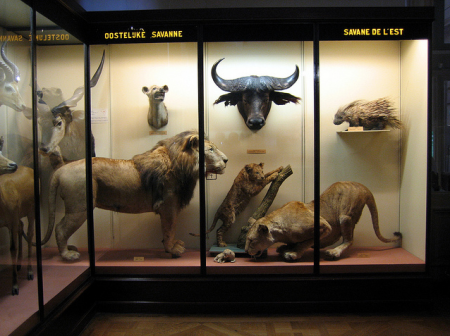
a rhino and a lion from Africa, a jaguar from Mexico, a grizzly bear from Canada. They were once alive, these creatures on display, but few viewers were filled with dread or even taken by surprise. Something about these figures behind their protective glass enclosure told everyone they were long dead, curiosities shot to death years ago because someone felt museums needed to have these.
Display from the Congo National Museum
There’s something incredibly sad about these fierce predators now staring endlessly out of their glass eyes at a public who doesn’t care except to feel mildly embarrassed for the ones that are obviously getting a little threadbare. So some viewers make jokes while others move on or check their smart phones.
It isn’t real, the life presented in these displays. Real life is seen in moments. A real bear is glimpsed as it crosses a road far ahead, a lumbering figure surprisingly quick as it plows through the underbrush and disappears. Out west, a cougar may be watching you without your ever knowing it’s there. But you might catch the mark of its paw in the mud or the flash of its long tail as it disappears into the forest – if you’re watching.
There’s another kind of unreality as well, also perpetrated by these displays: false information. For a long time, James Horner maintained that some dinosaurs were quite smart and very fast, yet when he proclaimed that idea in the Smithsonian Museum dinosaur exhibit, he was escorted out. It took Michael Crichton’s Jurassic Park bestseller and Spielberg’s blockbuster movie based on it to change people’s mind (and the Smithsonian exhibit).
This happens in exhibits of early humans as well. We see them huddled around their tiny fire, leading a miserable life. That’s obvious because they look terrible, with long straggly hair, rough hide clothing, and a cave littered with old bones. Whew! Lucky we’ve come a long way since then, eh?
And yet, some of the very earliest archaeological finds we have indicate that people cared very much about the way they looked. Some of the oldest finds are jewelry – pierced, dyed shells strung together. The contenders for oldest jewelry in the world include shell necklaces found in present-day Algeria and Israel (100,000 years old), Morocco (82,000 years old), and South Africa, (80,000 years old). Included with the pierced shells found in Blombos Cave, South Africa (See photo) was an incised block of red ochre, mineral clay widely used in face painting in many cultures, right up to today. It’s a common ingredient in women’s makeup “blusher.”
At the same time people were making marks on blocks of red clay and making strings of shell beads, they were burying their dead with fine tools and jewelry, indicating a sense of the afterlife where these people would need these fine goods.
Breakthroughs in archaeology in the last twenty years have re-written the human story as we know it, yet they don’t get a lot of press, perhaps because people hate to shake up the tidy pictures they’ve internalized as truth. DNA analyses have shown that many western Eurasians today carry traces of Neanderthal genes. Obviously the story of human development is a little more complicated than we were led to believe! Similarly, some people in the Philippines, New Guinea, and Australia have been shown to carry traces of Denisovan DNA. Denisovans, once living in eastern Eurasia, are believed to be related to the Neanderthals.
I’m writing a series of novels about ancient explorers in the Americas, about 14,000 years ago. That’s not all that long ago. Pedra Furada, a site in northeast Brazil, dated over 30,000 years ago, includes atlatls (dart-throwers) and darts, as well as rock art and pottery. Monte Verde, in southern Chile, showing evidence of humans hunting mastodons, was also dated over 30,000 years ago. In the Topper Hill site, in South Carolina, Albert Goodyear has found evidence of human presence 16,000 years ago and possibly 50,000 years ago.
All these dates pale next to finds in Great Britain, which establish the presence of tool-making hominids more than 500,000 years ago, dubbed homo ancestrus, apparently later killed or driven out by the encroaching Ice Age.
All of this, to me, is very exciting – and reassuring. We humans, a complicated species with a turbulent history, have faced difficulties before, including drastic climate changes that remade our world. Yet we found a way to survive. And maintain our spiritual connection to the world. And look nice too.
Sources and interesting reading:
Henshilwood, Christopher, et al. “A 100,000 year-old ochre processing workshop at Blombos Cave, South Africa,” Science, 14 October 2011, 33:219-222
Mayell, Hillary. “Oldest Jewelry? Beads Discovered in African Cave” National Geographic News, April 15, 2004
Ravilious, Kate. “Oldest Jewelry Found in Morocco Cave” National Geographic News, June 7, 2007
Randolph, W. Schmid. “Ancient Shells May be Oldest Jewelry” Live Science, 22 June, 2006
Sample, Ian. “First Humans Arrived in Britain 250,000 years earlier than thought” The Guardian, 7 July 2010


January 1, 2013
Ancient explorers in the South Pacific
I seldom use this blog for its original purpose – promoting the Misfits and Heroes series of ancient adventures, but today I will. The second book in the series, Past the Last Island, is now available in paperback and in e-book format on Kindle, from Amazon.com.
Past the Last Island is the story of a group of explorers who set out to discover what lies beyond the edge of the world.
They start from the area that is now called Indonesia, 14,000 years ago. With the end of the Ice Age, their world has suffered wrenching changes. Wild seas drowned their old village, killing many, including the chief and his wife. As the story begins, only treetops sticking out of the water mark where the old village stood. Later, a comet appears, identified by the shaman as the white face of the goddess of death with her terrible white hair spread out behind her. Shortly after the sighting, the new chief falls from a cliff and lies unresponsive, between life and death.
Terrified, many villagers turn to the strongest man in the village to guide them, though he hungers only for war and revenge. Others come, gradually, to a different vision. They see the flood, the comet, and the chief’s fall as a sign telling them to leave the life they knew and find something completely different.
Some history of the area
The South Pacific, 14,000 years ago, had long been the crossroads of migrants from Asia, Southeast Asia, and Australia. Homo erectus people occupied China and Southeast Asia over a million years ago, leaving behind evidence of hunting, fire use, and flaked stone tools (See Homo erectus migrations map).
China and Southeast Asia over a million years ago, leaving behind evidence of hunting, fire use, and flaked stone tools (See Homo erectus migrations map).
The Denisovan hominids lived in eastern Eurasia, Asia, and Southeast Asia between 50,000 and 170,000 years ago. According to David Reich, professor of genetics at Harvard University, DNA sequencing of a finger bone found in Denisova Cave in Siberia showed that Denisovans are distant relatives of the Neanderthals, who occupied western Eurasia. According to his findings, modern people in the Philippines, New Guinea, and Melanesia, as well as Australian Aborigines are related to Denisovans. This indicates a very long history of migrations over a very large area.
The so-called “Hobbit” people, Homo Floresiensis, occupied the island of Flores in what is now Indonesia, from 94,000 to 13,000 BC. Despite their small size (about 3’ 6”/1.06 m tall), they successfully hunted pygmy elephants and large rodents.
Past The Last Island makes several references to people from long ago who left their marks on the land. Their presence, even if only in handprints on a wall or skeletons in a cave, is reassuring to the travelers, reminding them they’re not truly alone, even when there’s no one else there.
The crossroads of cultures
By 14,000 years ago, the South Pacific Islands would have been a crossroads of cultures and a hotbed of innovation, especially regarding boats and navigation. As the sea level rose, boats became necessities. While the islands would have provided both shelter and abundant resources, the sea would have been the highway that went to everywhere else. The navigator would have been the most respected person in the group because he understood the sea and its mysteries, including dangerous currents and star guides.
The Explorers
While we think of ancient people as sedentary, archaeological evidence points to the opposite. Many were bold, long-distance travelers, from the Homo erectus explorers who first explored the area to the later South Pacific mariners, who became the greatest open water navigators in the world, traveling thousands of miles to Fiji, Hawaii, and Easter Island.
The heroes of my book are not super-heroes, born with all the answers. They’re heroes because they rise to the challenges they face.
I hope you enjoy it. While you don’t have to have read the first book in the series, Misfits and Heroes: West from Africa, the ending of the second book will mean a lot more to you if you have.
Kathleen Flanagan Rollins
Some sources and interesting reading:
Karen L. Baab, Department of Anthropology, Stony Brook University, New York, “Homo Floresiensis – Making Sense of the Small=Bodied Hominin Fissils from Flores” The Nature Education Knowledge Project www.nature.com
“Homo erectus,” Athena Review, vo.l 4, no. 1 “The Long Journey of an Ancient Ancestor” www.athnapub.com/13/intro.he.htm
“Homo erectus,” Wikipedia
“Homo Floresiensis” Wikipedia
“Meet Your Ancient Relatives: The Denisovans” NPR, Science Friday, interview with David Reich, professor genetics, Harvard University, August 3, 2012
“Human Evolution: Homo erectus” Stanford Universityhttp://www.stanford.edu/~harryg/prote...
“What Does It Mean To Be Human? Homo Floresiensis, Smithsonian National Museum of Natural History http://humanorigins.si.edu/evidence/human-fossils/species/homo-floresiensis


November 25, 2012
Clovis, Updated
So about the Land Bridge Theory…
In a shocking reversal of the traditional model of the peopling of the Americas, Dr. Dennis Stanford, head of the Archaeology Division, National Museum of Natural History, Smithsonian Institution, has claimed that the people who made the famous Clovis points, first discovered near Clovis, New Mexico in 1929, did not come from Asia. Probably they came from northern Spain. His interesting March 12, 2012 lecture given at Gustavus Adolphus College is available on YouTube.
Dr. Stanford, an expert on Clovis archaeology, begins his talk with an overview of the traditional Clovis First theory, which developed after sophisticated bifacial fluted points were found near Clovis and other sites in the American west in the 1930s. Subsequently, Clovis points – very distinctive in their style – were found in almost every state east of the Mississippi River. Note how both sides are worked all the way across the stone in the photo.
Based on those finds, archaeologists concluded that people arrived in the Americas by way of Beringia, the land bridge connecting Siberia and Alaska during the Ice Age, and from there, they spread across and down the Americas. That’s a strange conclusion when you realize there was never any evidence of the Clovis people coming from Asia. Even stranger was the assumption of direction of human migration from north to south – during the Ice Age – and west to east. Yet the theory has been repeated so many times in the past seventy years that it’s assumed to be fact. An illustration something like this appears frequently in history texts.
However, after spending decades looking for the origins of Clovis points in Siberia, Stanford and other archaeologists realized that ancient Siberian technology was completely different from Clovis points. Instead of the distinctive bifacial fluted quartz crystal points the Clovis people used, ancient hunters in Siberia used pieces of bone that had sharpened stone shards driven into them.
As research on Clovis points continued and the findings from many different sites were compiled, archeologists found the vast majority of Clovis points were discovered on the east side of North America, especially in the areas now known as Maryland, Virginia, and Delaware and through the Appalachian region.
Further, the Clovis people seemed to have moved from the east to the west, or at least their technology did, not the other way around. The eastern sites tend to be quite large, supporting large populations, while the western sites are much smaller and more scattered.
Making the Solutrean Connection
In studying the sites along the east coast, Stanford found artifacts very similar to those made by the Solutrean Age people of northern Spain/southern France, especially the fluted bi-facial points. (See photo.) According to Stanford, working both sides (faces) of a spear point or knife is relatively uncommon. Most ancient people worked only one side of the stone. Flutes are the hollowed-out sections in the points that allowed them to be hafted (attached) to a spear or dart.
In addition to bi-facial points, Solutrean Age people in northern Spain and southern France developed atlatls (dart throwers), eyed needles, all-weather clothing, and extensive cave art dating back to 35,000 years ago, such as the famous paintings in Lascaux, El Castillo, and Altamira caves. Stanford points out that sites in coastal Maryland have yielded Solutrean-style points and other artifacts dating from 17,000 to 21,000 years ago. Scallop fishermen working seventeen miles off the Virginia coast in 1970 pulled up a mass of Mammoth bones with a Solutrean style point more than 18,000 years old embedded in one of the bones.
Stanford’s conclusion is that Clovis points were the next generation of Solutrean technology brought to the Americas by people from northern Spain/southern France. He backs up the theory with references to the rarity of bi-facial points, the similarities between Solutrean points and Clovis points, and the finding of Solutrean style points along the east coast of North America, the coast of Newfoundland, and off the coast of France and the Netherlands.
There are several points worth noting from Dr. Stanford’s talk:
Clovis people did not come from Asia.
They didn’t migrate south and east across the Americas.
And several other points worth considering though not included in his talk:
Clovis people were clearly not the first people in the Americas, no matter where they came from. Cactus Hill (Virginia) and Meadowcroft Rockshelter (Pennsylvania) as well as important sites in South America, including Pedra Furada (Brazil) and Monte Verde (Chile) all predate Clovis by a very long time. Dr. Al Goodyear, digging at the Topper site in South Carolina, found Clovis points dating to 13,000 years ago. A meter deeper, he found numerous pre-Clovis stone artifacts dated by an outside team of geologists to 16,000 years ago. Five meters down, he found artifacts similar to the pre-Clovis tools, dated to 50,000 years ago.
The study of Clovis points should not assume that the people traveled with the points. Maybe they did. Or maybe the technology spread in trade.
Any single point of origin theory of human migration into the Americas should be suspect. It’s pleasantly simple and therefore seductive, but it’s limiting. It encourages archaeologists to ignore data that doesn’t fit within its clean, simple lines. Why do people have to arrive in the Americas from only one place of origin? If people were in the southern tip of Chile 30,000 years ago, probably they came by boat across the Pacific. If people were in northeastern Brazil 60,000 years ago, probably they came across the Atlantic from Africa. If people were in coastal Maryland 18,000 years ago, perhaps they came from Spain. If they were in Alaska, they probably came from Asia. These possibilities and many more can exist side by side. The evidence must determine the conclusion, not the theory.
Many early settlements probably failed, for any number of reasons including natural disasters such as the Younger-Dryas Event, known as The Big Chill, which occurred between 12,800 and 11,500 years ago. People who lived in failed settlements would not be recorded in DNA lines of current inhabitants. Nevertheless, those people lived.
In his talk, Stanford briefly acknowledged that other people, before and after the Clovis people, may have arrived by boat along the west and east coast. However, he stopped short of opening the door to multiple migrations over a long period of time. He is a longtime Clovis advocate. It was a setback for him to realize that Clovis people didn’t come from Asia. But the Solutrean hypothesis allows him to form a new Clovis Theory and to connect Clovis points found in North America with the fabulous cave art and advanced building techniques of the Solutrean peoples of northern Spain and southern France. Certainly, the new theory is an improvement on the original Beringia story.
The debate over Clovis, while interesting, is ultimately only one chapter in a very complicated story. The past is far older than the beautiful Clovis points and more complicated than we like to admit. That’s what makes it fascinating.
Sources and interesting reading:
Dennis O’Neil, “Early Modern Human Culture” Behavioral Science Department, Palomar College, California,
“New Evidence Puts Man in North America 50,000 Years Ago,” Science Daily, November, 2004, http://www.sciencedaily.com/releases/2004/11
Dennis Stanford’s talk on the Clovis-Solutrean Connection http://www.youtube.com/watch?v=rLV9A8...
“Clovis Point,” Wikipedia http://en.wikipedia.org/wiki/Clovis_point
Ian Sample, “First humans arrive in Britain 250,000 years earlier than thought,” The Guardian, July 7, 2010 www.guardian.co.uk/science/2010/jul/07/first-humans-britain-stone-tools>
“Aurignacian” Wikipedia
Richard A. Lovett, “Footprints Show 1st Americans Came 25,000 Years Early? National Geographic News, June 6, 2008,









